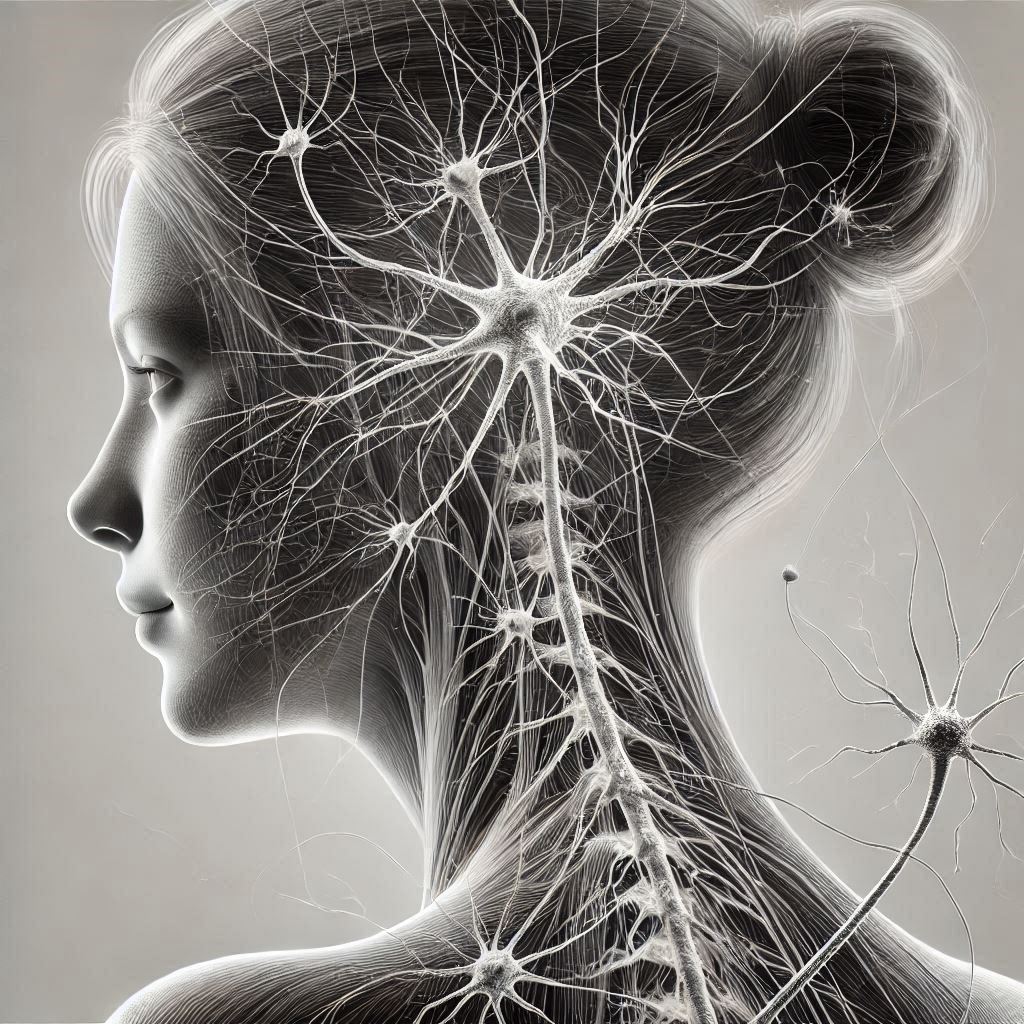Ever find yourself suddenly wide awake and jittery, even in the most mundane situations? Adrenaline rushes can hit us at the most unexpected times, flooding our body and mind with a surge of energy and heightened alertness. This natural “fight or flight” response, triggered by the hormone adrenaline, is designed to help us face immediate threats. But why do some people experience these rushes so easily?
Understanding the impact of adrenaline rushes on the body and mind can offer insights into why these reactions occur. While occasional bursts of adrenaline can enhance performance and decision-making, frequent or unnecessary rushes can be unsettling and exhausting. In this post, we’ll delve into the physiological and psychological factors that make some individuals more prone to these high-energy episodes, exploring both the benefits and challenges they present. Stay tuned to discover practical ways to manage and balance your body’s response effectively.
Understanding Adrenaline Rushes
Adrenaline, also known as epinephrine, is a powerful hormone and neurotransmitter that plays a vital role in our body’s response to stress and danger. When released into the bloodstream, adrenaline sets off a series of physiological changes, gearing us up for action. Let’s delve into how adrenaline impacts our body and the triggers that can lead to exhilarating rushes.
Physiological Response to Adrenaline
Adrenaline swiftly acts on our system, causing the heart rate to increase, blood pressure to rise, and breathing to become faster and deeper. These responses are all part of the body’s innate mechanism to prepare for the instinctual fight or flight reaction. As adrenaline surges through our veins, it readies us to confront challenges head-on or make a quick escape from perceived threats.
Triggers of Adrenaline Rushes
Various factors can act as catalysts for adrenaline release, propelling us into a heightened state of alertness and readiness. Stressful situations, moments of fear, exhilarating experiences, and feelings of anxiety are all common triggers for adrenaline rushes. Whether facing a challenging obstacle, anticipating a thrilling event, or encountering a sudden shock, our body’s response to these stimuli often involves the surge of adrenaline to mobilize our resources for action.
To learn more about the profound effects of adrenaline on the body, you can explore further details on Your Hormones – Adrenaline and Health Direct – Adrenaline.
Stay tuned as we unravel deeper into the mysteries of adrenaline rushes and how they shape our responses to the world around us.
Factors Contributing to Easily Triggered Adrenaline Rushes
Adrenaline rushes can vary from person to person, with some individuals seemingly more prone to experiencing these intense bursts of energy and heightened awareness. Let’s explore some key factors that contribute to why some people may get adrenaline rushes more easily than others.
Genetic Predisposition
Genetics play a significant role in determining how our bodies respond to stress and excitement. Research has shown that genetic predispositions can influence an individual’s sensitivity to adrenaline. Certain genes may impact the body’s ability to regulate adrenaline levels, making some people more reactive to adrenaline-inducing situations. Studies suggest that a combination of genetic factors and environmental influences can contribute to the likelihood of frequent adrenaline rushes (Healthline).
Environmental Influences
Apart from genetics, environmental factors also play a crucial role in shaping our adrenaline responses. Factors such as upbringing, past experiences, and exposure to stressors can impact how our bodies react to adrenaline. For example, individuals who have been exposed to high-stress environments may develop a heightened adrenaline response as a coping mechanism. Understanding the interplay between genetics and environmental influences can provide insights into why some individuals are more predisposed to experiencing adrenaline rushes.
Psychological Factors
Psychological factors, including personality traits, mental health conditions, and coping mechanisms, can significantly influence a person’s propensity to experience heightened adrenaline levels. Individuals with certain personality traits, such as sensation-seeking or risk-taking behavior, may be more drawn to adrenaline-inducing activities. Moreover, individuals dealing with anxiety disorders or high levels of stress may also experience frequent adrenaline rushes as a physiological response to their mental state. Exploring the psychological aspects of adrenaline sensitivity can provide a holistic understanding of why some individuals are more prone to easily triggered adrenaline rushes.
By delving into the complex interplay of genetic predispositions, environmental influences, and psychological factors, we can gain a deeper understanding of why some individuals may experience adrenaline rushes more readily than others.
Impact of Easily Triggered Adrenaline Rushes
Adrenaline rushes, often triggered easily in some individuals, can have notable impacts on both mental well-being and physical health. Understanding the effects of these rapid bursts of energy is crucial in recognizing the importance of maintaining a balanced physiological state.
Positive Effects
Easily triggered adrenaline rushes can bring about several positive outcomes. These include heightened alertness, allowing individuals to react swiftly in demanding situations. Adrenaline can enhance performance under pressure, enabling individuals to tackle challenges with a sharper focus and increased energy. Moreover, the surge of adrenaline can boost motivation levels, propelling individuals to push beyond their limits and achieve remarkable feats.
Negative Effects
Despite their positive aspects, frequent adrenaline spikes can also lead to negative consequences. Sustained exposure to adrenaline may elevate stress levels, contributing to feelings of anxiety and restlessness. Over time, this heightened state of arousal can potentially develop into anxiety disorders, impacting an individual’s mental well-being. Furthermore, the long-term implications of continuous adrenaline rushes may strain the cardiovascular system and contribute to health issues such as high blood pressure and cardiovascular diseases.
For further information on the impact of adrenaline rushes, you can refer to articles from WebMD, Medical News Today, and Healthline.
Managing Adrenaline Responses
Regulating adrenaline levels and coping with easily triggered adrenaline rushes are essential for maintaining emotional balance and overall well-being. By incorporating effective management strategies, you can learn to navigate intense adrenaline responses with mindfulness and proactive techniques.
Mindfulness and Relaxation Techniques
Mindfulness meditation is the practice of intentionally bringing your attention to the present moment without judgment. It involves cultivating a heightened awareness of your thoughts, feelings, and physical sensations as they arise and dissipate. As Thich Nhat Hanh eloquently stated, “The present moment is the only moment available to us, and it is the door to all moments.”
- Breathing Exercises: Begin by finding a comfortable seated position and focusing on your breath. Inhale deeply through your nose, feeling your belly expand, and exhale slowly through your mouth. As distracting thoughts arise, gently acknowledge them and return your attention to the rhythm of your breathing.
- Body Scan: Systematically direct your attention to different parts of your body, from the soles of your feet to the crown of your head. Notice any areas of tension or relaxation without trying to change them. This practice cultivates mindful embodiment and self-awareness.
- Walking Meditation: Transform a simple stroll into a meditative experience by focusing on the sensations of each step. Feel the ground beneath your feet, the movement of your body, and the changing scenery around you. This practice can be especially grounding for those who find it challenging to sit still.
The Art of Release: Progressive Muscle Relaxation
Developed by Dr. Edmund Jacobson in the 1920s, progressive muscle relaxation (PMR) is a technique that involves systematically tensing and releasing different muscle groups throughout the body. This process helps to identify and release areas of physical tension, promoting a deep state of relaxation.
- Tense and Release: Begin by tensing a specific muscle group, such as your hands or feet, for several seconds. Inhale deeply as you tense, and exhale as you release the tension, allowing the muscles to go completely limp. Move through each muscle group, one by one, repeating the process of tensing and releasing.
- Visualization: As you release the tension from each muscle group, visualize the stress and tension leaving your body. Imagine a warm, soothing wave of relaxation washing over you, carrying away any lingering tension or anxiety.
The Art of Tranquility: Guided Imagery
Guided imagery is a powerful technique that employs vivid mental visualization to induce a state of deep relaxation and calm. It often involves imagining a peaceful, serene environment or scene that evokes feelings of tranquility and well-being.
- Beach Visualization: Close your eyes and imagine yourself on a secluded beach. Feel the warmth of the sun on your skin, the gentle breeze caressing your face, and the sound of waves lapping against the shore. Visualize the crystal-clear water and the soft, white sand beneath your feet.
- Forest Visualization: Picture yourself in a lush, verdant forest. Inhale the earthy scent of the trees and moss, and listen to the melodic chorus of birdsong. Imagine a trickling stream nearby, its water sparkling in the dappled sunlight that filters through the canopy above.
The Art of Harmony: Yoga and Tai Chi
These ancient practices combine physical movement, controlled breathing, and mindfulness to cultivate a sense of harmony between body and mind.
- Yoga: From gentle hatha yoga to more vigorous vinyasa flows, yoga offers a wide range of postures and sequences designed to promote flexibility, strength, and relaxation. Focus on synchronizing your movements with your breath, and observe any sensations or emotions that arise without judgment.
- Tai Chi: Often described as “meditation in motion,” tai chi involves flowing through a series of graceful, choreographed movements. As you shift your weight and transition from one posture to the next, cultivate a sense of balance, groundedness, and inner stillness.
By incorporating these mindfulness and relaxation techniques into your daily routine, you can cultivate a greater sense of inner peace, emotional resilience, and overall well-being. Remember, the journey towards tranquility is a practice, and with patience and persistence, you can unlock the profound benefits that these ancient wisdom traditions offer.
Physical Activity and Stress Management
Incorporating regular physical activity into your routine is a powerful way to manage stress and reduce the frequency of adrenaline rushes. Engaging in activities like yoga, running, or strength training not only improves your physical health but also boosts your emotional resilience. Physical exercise can help release built-up tension and provide an outlet for stress, leading to a more balanced emotional state. Additionally, adopting stress-relief practices such as journaling, spending time in nature, or practicing mindfulness in movement can further support your overall well-being and help mitigate the impact of adrenaline surges.
By proactively implementing mindfulness practices and engaging in physical activities that promote stress management, you can enhance your ability to regulate adrenaline responses and navigate intense emotions with resilience and self-awareness.
For more information on reducing adrenaline anxiety and managing adrenaline during presentations, you can check out How to reduce adrenaline anxiety with these techniques and Tips and Tricks for How You Can Manage Adrenaline During Presentations and Public Speaking.
Seeking Professional Help
If you find yourself frequently experiencing adrenaline rushes that interfere with your daily life or cause undue distress, seeking professional help is crucial. Healthcare providers and mental health professionals are equipped to offer guidance and support tailored to your individual needs. Below are some reasons why consulting these experts is important when dealing with excessive adrenaline rushes or related anxiety issues:
Expert Evaluation and Diagnosis
Consulting a healthcare provider allows for a thorough evaluation of your symptoms and overall well-being. They can help determine the underlying causes of your adrenaline rushes and provide an accurate diagnosis. This assessment is essential in creating a personalized treatment plan that addresses your specific concerns.
Tailored Treatment Plans
Healthcare professionals can devise personalized treatment plans that may include a combination of therapy, medication, lifestyle modifications, and coping strategies. These tailored approaches are designed to help you manage adrenaline rushes effectively and improve your overall quality of life.
Support and Guidance
Professional help offers valuable support and guidance as you navigate through the challenges associated with excessive adrenaline rushes. Mental health professionals can provide coping mechanisms, emotional support, and practical advice to help you better cope with intense feelings of anxiety or stress.
Access to Resources
Seeking professional help grants you access to a wide range of resources aimed at addressing your concerns. From educational materials to support groups, healthcare providers can connect you with tools and programs that supplement your treatment plan and promote holistic well-being.
Monitoring and Follow-Up Care
Regular consultations with healthcare professionals ensure ongoing monitoring of your progress and adjustment of treatment plans as needed. This continuity of care plays a vital role in managing adrenaline rushes effectively and addressing any emerging issues proactively.
When it comes to dealing with excessive adrenaline rushes, reaching out to healthcare providers and mental health professionals is a proactive step toward regaining control and improving your overall well-being. Remember, you don’t have to face these challenges alone; professional help is always available to support you on your journey to better mental and emotional health.
For more information on the importance of consulting healthcare providers for adrenaline rushes, you can refer to The Importance of Seeking Medical Care After an Accident.
Conclusion
Experiencing frequent adrenaline rushes can stem from various causes such as heightened stress, anxiety, or even underlying medical conditions. These surges of adrenaline often manifest as anxiety, nervousness, or an inability to sleep, impacting daily life and overall health.
Recognizing the significance of managing these adrenaline responses is crucial for maintaining balance and well-being. Techniques like deep breathing and mindfulness can effectively manage an overactive sympathetic nervous system, mitigating the adverse effects.
By understanding the triggers and learning to manage them, individuals can better navigate their emotions and experiences, leading to a more harmonious and healthy life.








